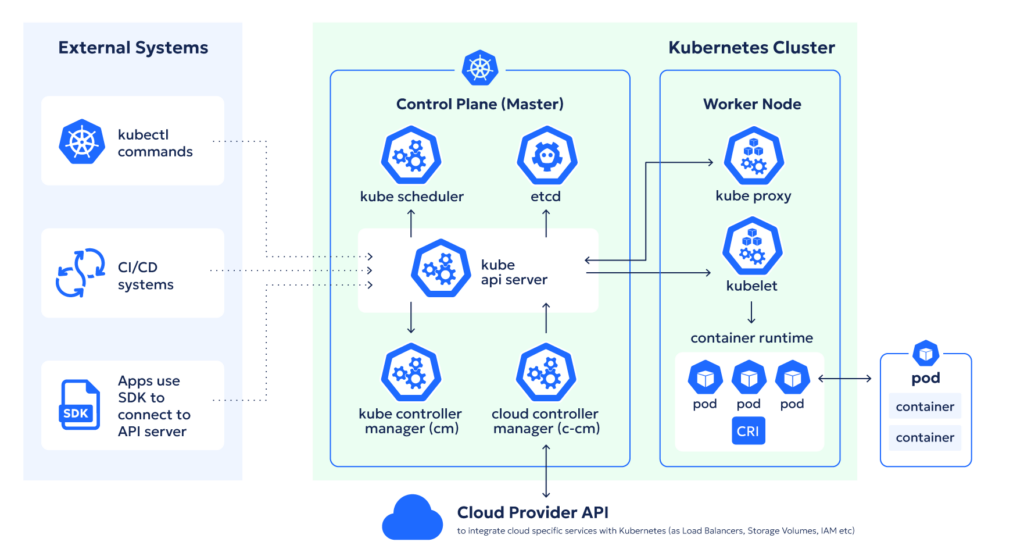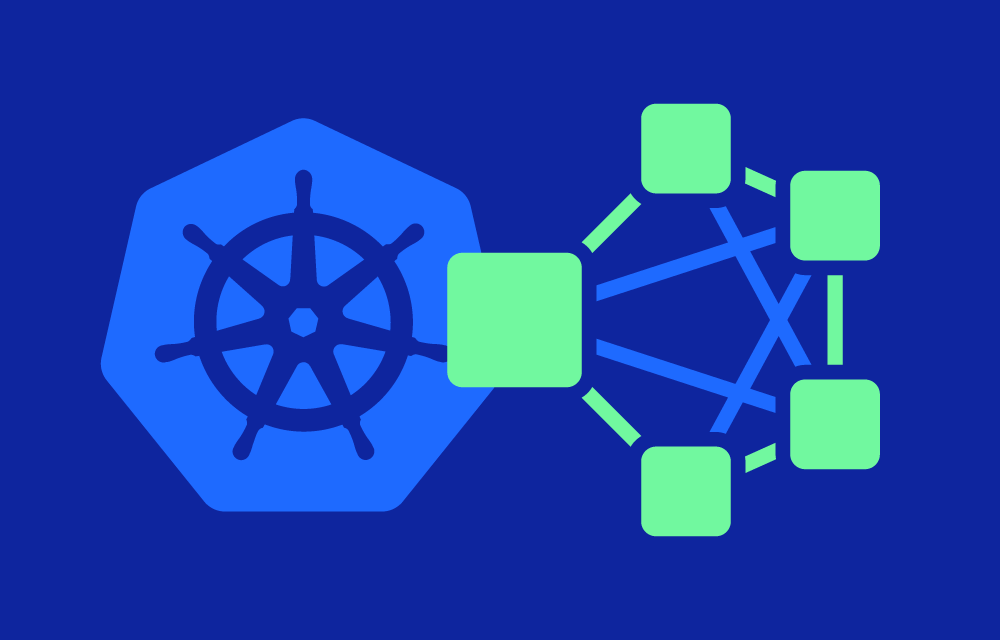1.Overview
Kubernetes architecture is built on a distributed system model, comprising a Control Plane and Worker Nodes. The Control Plane manages the overall state of the cluster, while Worker Nodes execute the actual workloads (containers). This separation of duties allows Kubernetes to efficiently manage and orchestrate applications across diverse environments.
2. Diagram with explaination
A Kubernetes architecture diagram visually represents the key components and their interactions within a cluster. These diagrams typically include:
- Control Plane Components: The API server, etcd (key-value store), scheduler, and controller manager.
- Worker Node Components: Kubelet, kube-proxy, and the container runtime.
Such diagrams help in understanding the data flow, network interactions, and the overall management of resources within a Kubernetes cluster.

3. Kubernetes Architecture Explained
The architecture of Kubernetes is designed for resilience, scalability, and automation. It manages application containers across a cluster of nodes, ensuring that they run as intended and scale according to demand.
- Control Plane Components: The control plane manages the Kubernetes cluster, making decisions about scheduling, monitoring the cluster’s health, and managing the lifecycle of containers. Key components include:
- API Server: The central management point that handles all RESTful API interactions.
- etcd: A consistent and reliable key-value store that holds all the cluster data.
- Scheduler: Allocates workloads to nodes based on resource availability.
- Controller Manager: Runs controllers that manage tasks like maintaining the correct number of pod replicas.
- Worker Nodes: These nodes execute the workloads assigned by the control plane. Each node includes:
- Kubelet: Ensures that containers are running as expected.
- Kube-proxy: Manages network communication for the pods.
- Container Runtime: The engine that runs the containers, such as Docker or containerd.
4. Components
Understanding the components of Kubernetes architecture is crucial for managing a Kubernetes cluster. These components include:
- API Server: Acts as the cluster’s front end, interacting with the rest of the system through API calls.
- etcd: Stores the configuration and state data of the cluster.
- Scheduler: Decides where to run pods based on resource availability.
- Controller Manager: Manages the state of various components to ensure the cluster functions as intended.
- Worker Nodes: Run the containers and report their status back to the control plane.
5. Kubernetes Architecture on Different Platforms
Kubernetes can be deployed across various platforms, each with its specific integrations and optimizations:
- Kubernetes Architecture on Azure (AKS): Azure Kubernetes Service (AKS) offers managed Kubernetes clusters with deep integration into Azure services like Azure Active Directory and Azure Monitor.
- Kubernetes Architecture on AWS (EKS): Amazon Elastic Kubernetes Service (EKS) integrates Kubernetes with AWS services, offering features like IAM roles for service accounts and integration with CloudWatch for monitoring.
6. Kubernetes Application Architecture
Kubernetes application architecture refers to the design and deployment of applications within a Kubernetes environment. It typically involves breaking down applications into microservices, which are then deployed as containers within the cluster.
- Kubernetes Application Architecture Diagram: This diagram illustrates how microservices are deployed, how they interact through services and ingress controllers, and how they scale within the cluster.
- Kubernetes API Architecture: The API server is the core component of Kubernetes, managing all interactions within the cluster through a RESTful API. This architecture ensures that all components can communicate efficiently and reliably.
7. Best Practices
To ensure optimal performance and reliability, following best practices in Kubernetes architecture is essential:
- Security: Implement role-based access control (RBAC), use network policies, and secure the API server.
- Scalability: Design for horizontal scaling, use autoscalers, and ensure efficient resource utilization.
- Monitoring and Logging: Integrate with monitoring tools like Prometheus and Grafana, and implement centralized logging.
8. Kubernetes Basic Architecture setup and First Deployment
For beginners, understanding the basic architecture and performing the first deployment is crucial:
- Basic Architecture: A simple Kubernetes setup typically includes a single control plane and multiple worker nodes. This setup can be expanded as needed.
- First Deployment: Involves deploying a simple application, such as a web server, using Kubernetes resources like deployments and services.
Conclusion
Kubernetes architecture is the backbone of containerized application management, offering a flexible and scalable solution for modern application deployment. Whether you’re deploying Kubernetes on-premises or in the cloud, understanding its architecture and components is key to leveraging its full potential.
For more detailed information, you can explore the following resources:



